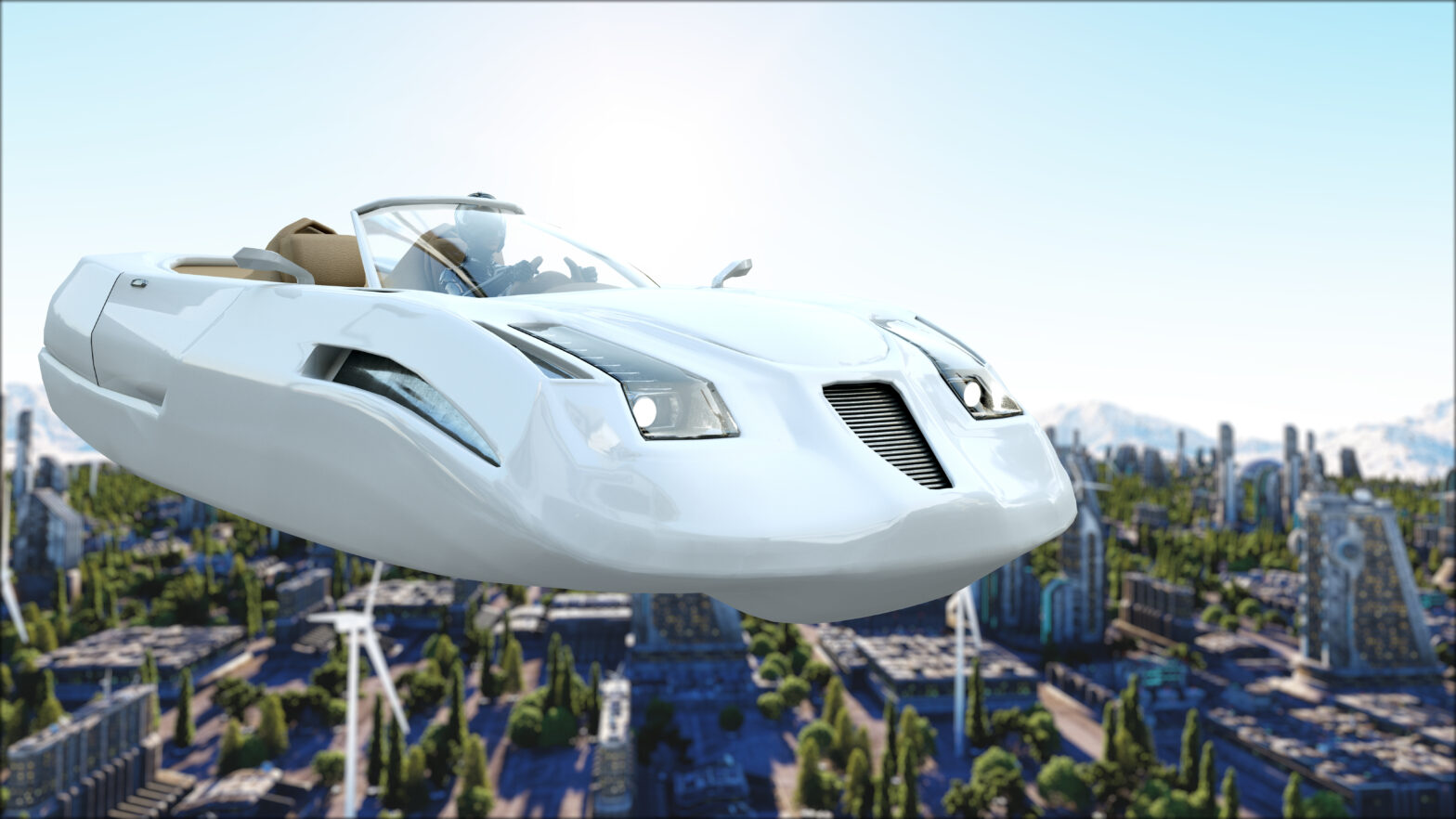For so long, pilotless passenger aircraft have only existed in the world of science fiction, but now these futuristic wonders are approaching reality at speed. Are they heading for a city near you? Will you and your team really be making your daily commute in ‘autonomous flying cars’ soon?
When major aviation and transportation players including Embraer, Uber, Bell and Airbus are developing aerial urban mobility solutions, we know we’re not dealing with science fiction anymore. These industry giants wouldn’t be investing their time and money in projects with no viable commercial future.
Flying cars, drones, and eVTOLs
The media hasn’t quite settled on a catchy collective name for all these disruptive new concepts yet. You will see references to ‘flying cars’ or to ‘drone taxi services’. Only time will tell which phrase captures the public’s imagination.
One term we’re certainly hearing increasingly often is ‘electric vertical takeoff and landing (eVTOL) aircraft’. That’s how, for example, Embraer – a leading business jet manufacturer clearly open to exploring new possibilities – is describing one of the company’s collaborations with Uber. Working through the EmbraerX division, dedicated to disruptive innovation, the company’s plans are not yet finalised but a concept revealed this May showed eight rotors providing vertical lift, a short wing to maintain that lift for horizontal flight, and a pusher propeller delivering forward momentum.
When?
If we start discussing dates, we must be realistic. Talk of launching an autonomous one-passenger drone service in Dubai (United Arab Emirates) as early as July 2017 proved overly optimistic. Seeing the commercial launch of these projects in the early 2020s is a more realistic target. Uber, for example, plans demonstrator VTOL flights in Dallas (Texas) and Los Angeles (California) in 2020, with commercial operations scheduled to launch in 2023.
Helping small businesses
If you are thinking that all these VTOL projects will only ever be used by high-net-worth individuals or executives in huge corporations, you’ll be pleased to know you can think again. The goal is to serve the entire workforce of any company, large or small, connecting suburbs with cities and connecting points within the cities themselves. These projects want to embrace everyone, making air travel part of ‘ordinary’ daily life. Just as architects once looked up to envisage the first skyscrapers, revolutionising how cities function, we can look up now for help with everyday urban traffic problems. The idea itself is not entirely new. ‘Air taxi’ services already operate in huge cities with a high number of helipads, such as Voom’s on-demand helicopter booking platform in São Paulo (Brazil) and Mexico City. But eVTOLs can take short-range urban commutes to a new level.
At this early stage, trying to forecast exact pricing for flying in eVTOLs is challenging but evidence suggests the aircraft could certainly be hired at significantly less cost than the current equivalent helicopter services. Flying range inevitably varies by concept but, to choose just one example, the Venturi HopFlyt eVTOL is targeting a range of 185km.
Building public confidence
The biggest barrier to the rapid implementation of new aerial urban mobility solutions is likely to be human, not technological. People will need time and evidence to become comfortable with the idea of pilotless aircraft. A survey of 8,000 people by Swiss bank UBS revealed 54% of participants would currently be unlikely to take a pilotless flight. But disruptive technology often needs time for public acceptance; that’s only a short-term issue, not a long-term problem. And a staggered process will be necessary anyway, carefully and safely developing the required technologies and building public trust. There won’t be an overnight leap to completely pilotless aircraft. Bell’s FCX-001 Concept Helicopter, for example, is described by the company as a “stepping stone” to fully autonomous unpiloted VTOL vehicles. Initially, we might see VTOLs being flown by a single pilot in the aircraft supported by a remote pilot on the ground.
The business world should be embracing the development of aerial urban mobility solutions. The potential benefits are clear, speeding up travel to and across cities and reducing ground congestion, making life easier and more efficient for many small and large companies. Working life is about to change forever.
Patrick Margetson-Rushmore is chief executive of Luxaviation UK.





